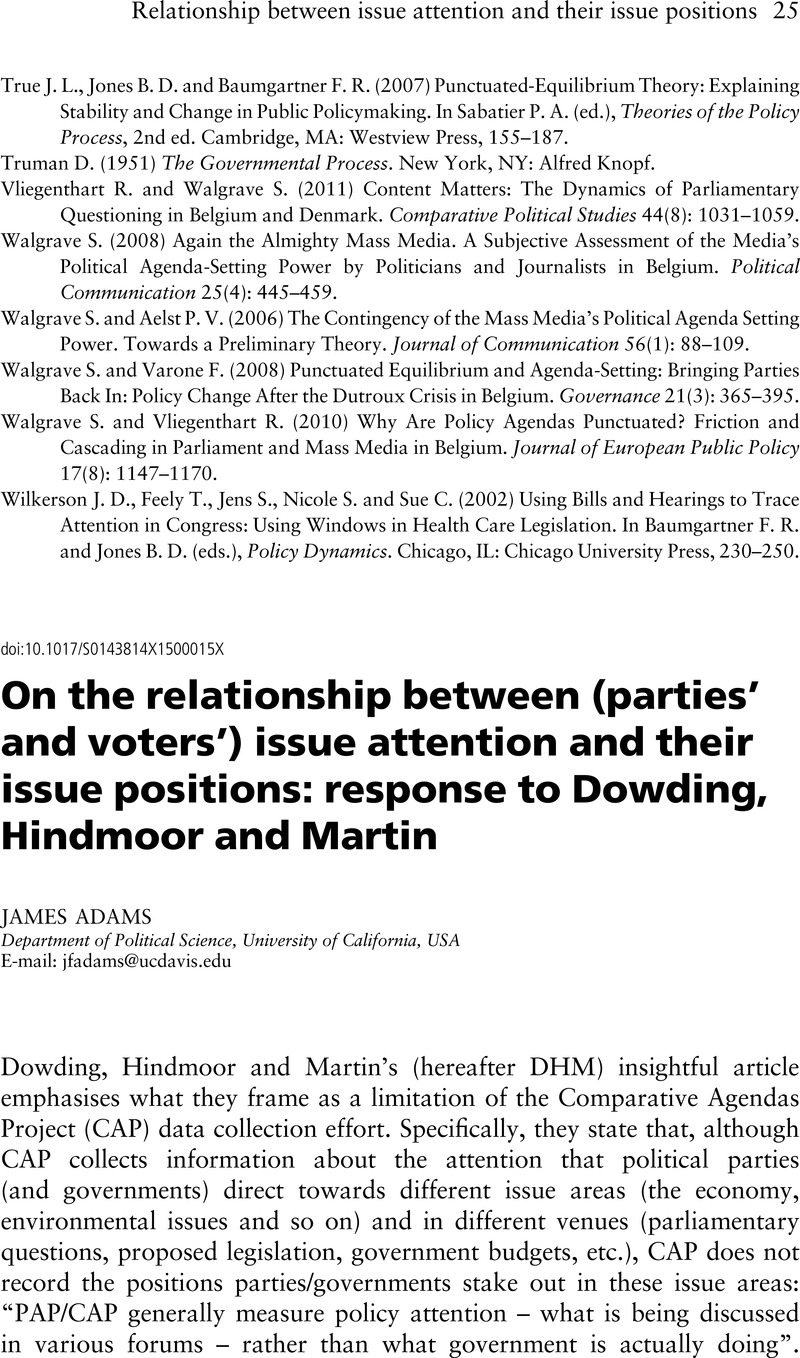Crossref Citations
This article has been cited by the following publications. This list is generated based on data provided by Crossref.
Visconti, Francesco
2018.
The legislative representation of public opinion policy priorities in Italy.
Italian Political Science Review/Rivista Italiana di Scienza Politica,
Vol. 48,
Issue. 3,
p.
307.
Bernardi, Luca
and
Adams, James
2019.
Does Government Support Respond to Governments’ Social Welfare Rhetoric or their Spending? An Analysis of Government Support in Britain, Spain and the United States.
British Journal of Political Science,
Vol. 49,
Issue. 4,
p.
1407.





